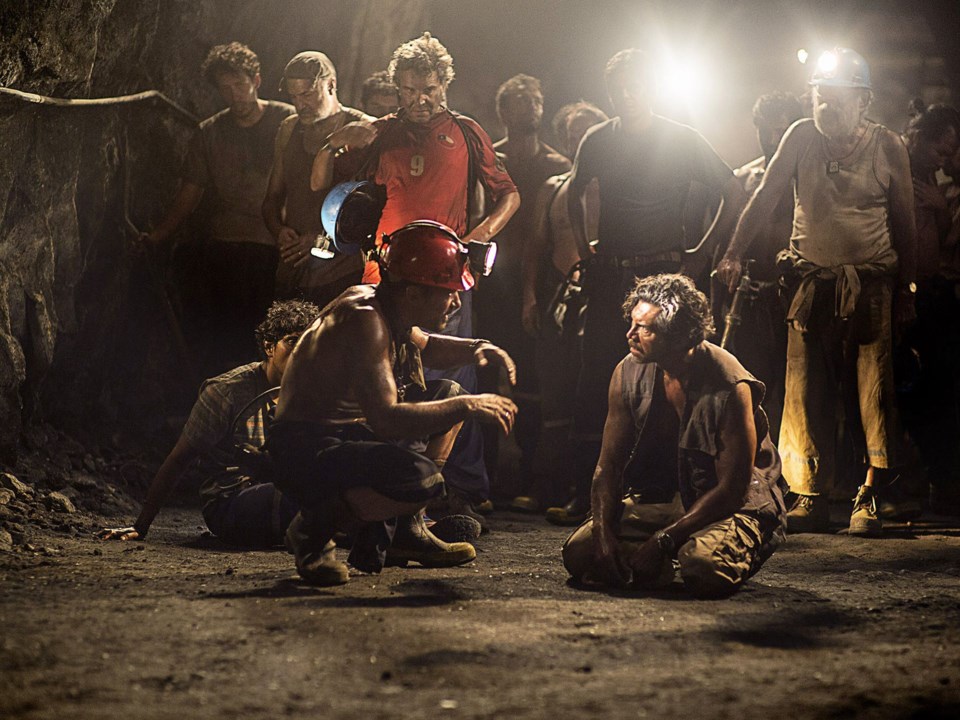It was five years ago that 33 miners were trapped 200 storeys below the surface of the earth and rescued, miraculously and one by one, as the world watched.
It was a 69-day cable news bonanza, as international efforts to rescue the men from the 100-year-old gold and copper mine in Copiapo, Chile, played out on TV.
The film, directed by Patricia Riggen (Under The Same Moon, Girl In Progress) resorts to a Hollywood version that feels a little less thrilling than the actual events, not just because we know the outcome but also because there are just too many individual stories to tell all of them well.
There is a hasty “encantada” with each miner during a retirement party for one of the older men. One man is juggling several women; one has a baby on the way. Just enough of an introduction for us to try and discern one man from the other after they are all covered in grime and seen in the half-light, but not enough for us to be critically invested in their plight, unfortunately.
We meet Edison Pena (Jacob Vargas), Yonni Barrios (Oscar Nunez from The Office). Luis Urzua (Lou Diamond Phillips) has been warning officials about the compromised safety of the mine for years. The men call him “Don Lucho,” the fighter.
It’s Mario Sepulveda (Antonio Banderas) who rallies the men after the disaster and becomes their de facto leader, earning the name “Super Mario” in the process. The men have food and water for three days that needs to be eked out for weeks that turn into months, and Mario becomes both enforcer and counsellor to 32 starving men who live on faith alone.
Any exit is blocked by a giant rock, twice the size of the Empire State Building. “That’s not a rock, that’s the heart of the mountain — she finally broke,” says Mario.
Meanwhile women and children keep vigil at “Camp Hope” back at the mouth of the mine. Juliette Binoche (woefully miscast) is Maria, a mean empanada cook whose brother is trapped below ground and who takes government officials to task over their inaction.
Laurence Golborne (Rodrigo Santoro) is the young minister of mines who takes over from the mining company, sluggish to act. The world is watching, which gives the Chilean government political motivation in addition to the moral imperative to retrieve the men safely. He works closely with chief engineer Andre Sougarret (Gabriel Byrne) on rescue scenarios (and with James Brolin, in a brief turn as an American drilling expert). Â
The political calculations and the culpability of the mining company, as well as the economic conditions endured by the workers, are all given short shrift by a screenplay keen to tug at heartstrings. The yearly death toll from mining accidents is mentioned at the beginning of the film, but filmmakers are content with meek finger-pointing rather than loud shouting about the sources of the problem.
The film is visually impressive, given its limitations. The 33 was filmed in the Chilean desert, not far from where the catastrophe occurred, while below-ground footage was shot in two Colombian mines. The above- and below-ground dramas that are unfolding are intercut with real news footage. The cast, as mentioned, is less authentic, less local, and the accents of the actors are varyingly jarring.
The faith of the miners recently resulted in a personal audience with Pope Francis. Their remarkable story spawned Deep Down Dark by Hector Tobar, the book on which the screenplay was based. But with so many stories to tell, the film waters down these potent experiences and makes The 33 feel like too many other faceless disaster movies. Â Â
The 33 opens Friday.



